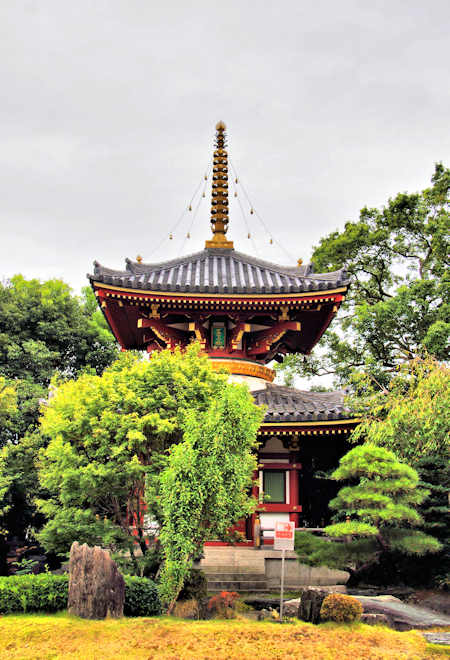All of these statues of the 7 lucky gods of Japan are at Taizo-Ji, a temple at the southern end of the Kunisaki peninsular. This first one is Daikoku, usually equated with Okuninushi, though originally a Hindu deity, Mahakala, a war god. In japan he is associated with agriculture, rice farming and the kitchen. He is usually depicted carrying a magic mallet, standing on a pair of rice bales and with a sack of treasure over his soldier.
The reason these statues are silver is that they are covered with little silver papers that visitors purchase from the temple and apply to the statues while making their prayers/requests. On the silver paper are bonji, a japanese version of an ancient sanskrit script.
This is Fukurokuju, god of wisdom and longevity and sometimes credited with the power to revive the dead. He is a manifestation of the southern Pole star and is linked to a myth of a Chinese Taoist sage. He is a later addition to the seven, replacing Kichijoten.
Benzaiten, a Hindu deity called saraswati, is usually depicted holding a Biwa, Japanese lute, and is associated with all that flows,... water, words, music etc. Often equated with the shinto kami Ichikishimahime
Ebisu is often considered to be the only Japanese god of the seven. The god of fishermen, workingmen, and good luck. He is immensely popular and is often depicted paired with Daikoku as a manifestation of the father-son pair Okuninushi and Kotoshironushi. He is usually depicted carrying a fish.
Bishamonten is a god of war and warriors, so obviously popular with samurai. Originally Hindu, he is the leader of the Shitenno, the 4 heavenly kings of Buddhism and protector of the north.
Jurojin, another Taoist god of wisdom and longevity, often confused with Fukurokuju and said to inhabit the same body.
Hotei, known as the Laughing Buddha in the West, is probably based on a real Chinese Zen monk. He is the god of happiness and the patron of bartenders!!


























